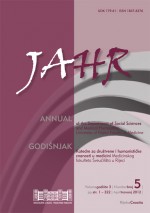Bioetičko obrazovanje u srednjoj školi
Abstract
As a new program Ethics has been introduced into high school education in the Republic of Croatia (2002), the topic of Bioethics is covered in the third year of study. The aim of educa-tion in Bioethics is to acquaint students with subjects in the field of bioethics and teach them to engage in creative dialogue in articulating and resolving moral dilemmas. The framework of the course has been formed in five teaching units:
– Man in life as a whole
– Bioethics as a response
– Ecology and environmental protection
– Bioethics and the biological sciences
– Medical bioethics
The students achieve competence in a universal context, that is an area including all people and the concept of pluriperspectivity, which includes dialogue between all relevant approach-es. Although bioethics education in high schools is limited to one year and in vocational schools even less, it is a basis for identifying the existential issues of nature and man and mastering methods of conducting dialogues in differing points of view. A special feature of this program is the possibility for teachers and students to form points of view regarding moral dilemmas in the world surrounding them. It is also a program that includes knowledge of the historical context of different points of view and a program of translating it into the language of contemporary moral judgement. The high school age is a time when questions of natural rights and rights attained by the course of civilization are questioned and evaluated, and they deserve a place in the education process. We hope that this framework of bioethics education is worthy of this, and that the offer of concepts and teaching content within that framework is an incentive to attain the goals set.
Downloads
Published
Issue
Section
License
Authors who publish with this journal agree to the following terms:
- Authors retain copyright and grant the journal right of first publication with the work simultaneously licensed under a Creative Commons Attribution License that allows others to share the work with an acknowledgement of the work's authorship and initial publication in this journal.
- Authors are able to enter into separate, additional contractual arrangements for the non-exclusive distribution of the journal's published version of the work (e.g., post it to an institutional repository or publish it in a book), with an acknowledgement of its initial publication in this journal.
- Authors are permitted and encouraged to post their work online (e.g., in institutional repositories or on their website) prior to and during the submission process, as it can lead to productive exchanges, as well as earlier and greater citation of published work (See The Effect of Open Access).



